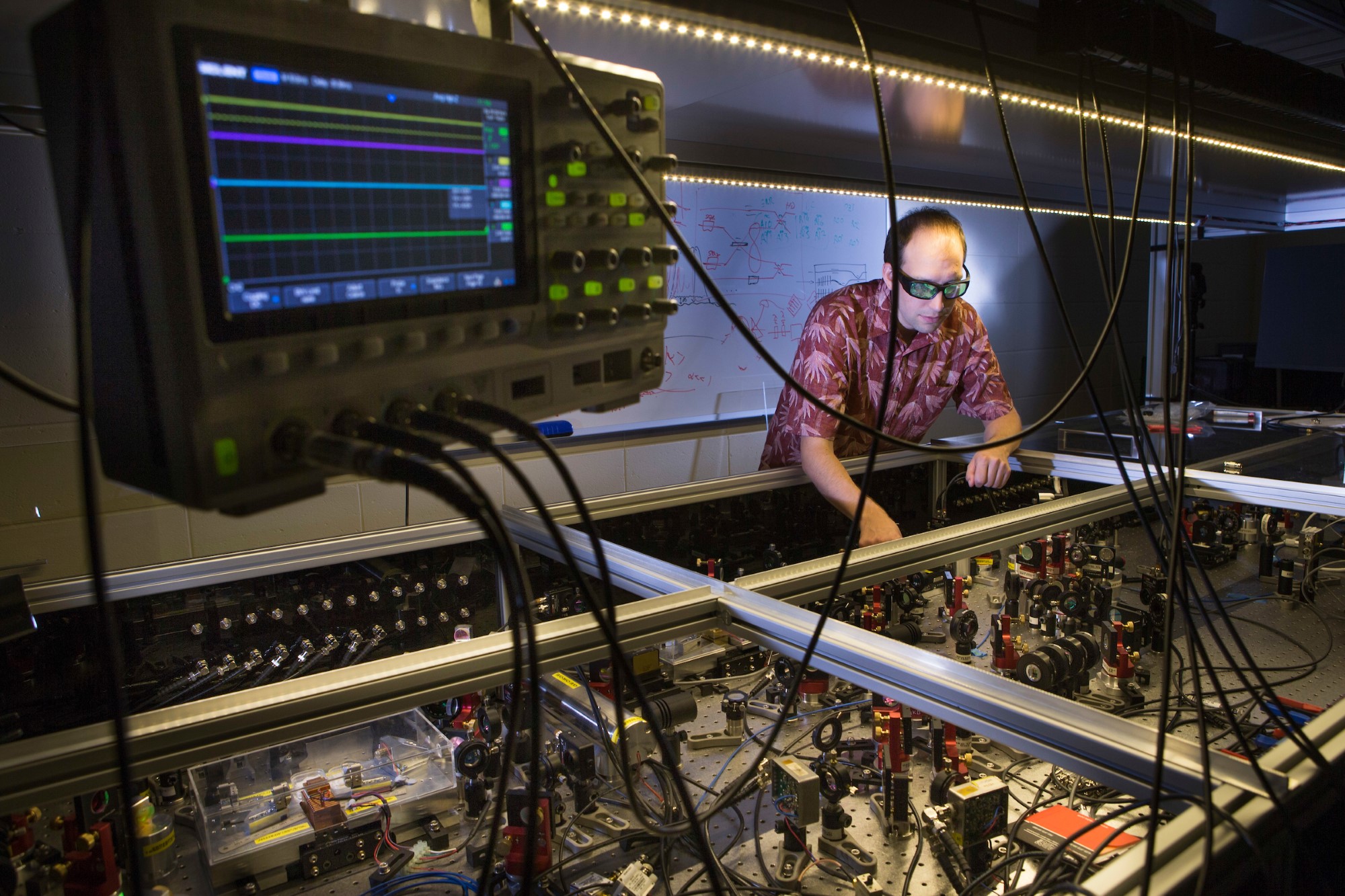
Research projects
Discover the forefront of astronomy and astrophysics through our projects, ranging from deep-space communication systems to groundbreaking adaptive optics. Explore our diverse, ongoing research initiatives shaping the future of space science.
Displaying 16 - 30 of 31 project(s).
This research project employs the WiFeS spectrograph on the ANU 2.3m telescope at Siding Spring to measure nebular chemical abundances in isolated gas-rich dwarf galaxies in the Local Volume.
Theme
- Structure and evolution of the Cosmos
GMTIFS is a near-infrared imager and integral-field spectrograph.
Theme
- Instrumentation
We are building a powerful new instrument to work with the Giant Magellan Telescope to record images and spectra ten times sharper than possible with the Hubble Space Telescope.
Theme
- Instrumentation
People
- Professor Robert Sharp, Researcher
The Australian company ViPAC Engineers & Scientists Pty. Ltd. is leading a project to develop a space-based monitoring system to improve the measurement of greenhouse gases, funded by under the government's Australian Space Research Program (ASRP).
Theme
- Instrumentation
The Giant Magellan Telescope (GMT) is being designed and built by an international consortium of institutions and will be the largest optical telescope in the world when it is completed around 2020.
Theme
- Instrumentation
Modelling the oscillations of Red Clump stars using stellar evolution codes to study their internal structure.
Theme
- Galactic archaeology
Student intake
Open for Honours, Master students
Observatory
People
- Dr Claudia Reyes, Supervisor
- Professor Melissa Ness, Supervisor
Modelling the oscillations of Red Clump stars using stellar evolution codes to study their internal structure.
Theme
- Galactic archaeology
Student intake
Open for Honours, Master students
Observatory
People
- Dr Claudia Reyes, Supervisor
- Professor Melissa Ness, Supervisor
We have recently demonstrated a novel technique to recover sub-dwarf M stars from the combination of VISTA infra-red and SkyMapper photometry.
Theme
- Galactic archaeology
This projects aim to understand new methods for estimating the stellar masses of distant galaxies using imaging from the James Webb Space Telescope.
Theme
- Structure and evolution of the Cosmos
To optimally build and operate adaptive optics systems, we need to understand the typical atmospheric conditions on the site where the telescope is built. Therefore, the Advanced Instrumentation and Technology Centre (AITC) is conducting a site characterisation campaign at Mount Stromlo.
Theme
- Instrumentation
Approximately 75% of SkyMapper's observing time will be initially dedicated to the Southern Sky Survey, a comprehensive digital survey of the entire southern sky.
Theme
- Galactic archaeology
- Stellar and planetary astronomy
- Structure and evolution of the Cosmos
We aim to build an innovative framework to leverage future 21-cm experiments to observe cosmic dawn, and to forecast the optimal constraints on dark matter.
Theme
- Structure and evolution of the Cosmos
This project delves deep into understanding how stars create elements, contributing to unraveling the mysteries surrounding the origins of elements by extracting and tracing the element compositions of millions of stars using cutting-edge spectroscopic surveys.
Theme
- Galactic archaeology
- Structure and evolution of the Cosmos
Supermassive black holes in the early Universe are more massive than we can presently explain. We aim to construct their demographics and reveal their origin.
Theme
- Black hole phenomena
- Structure and evolution of the Cosmos
Student intake
Open for Honours, PhD students
Observatory
People
- Associate Professor Christian Wolf, Supervisor
Veloce Rosso will be Australia’s next premier astronomical instrument.
Theme
- Instrumentation
